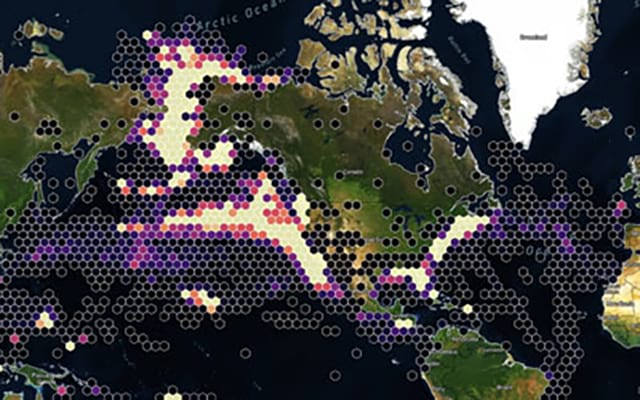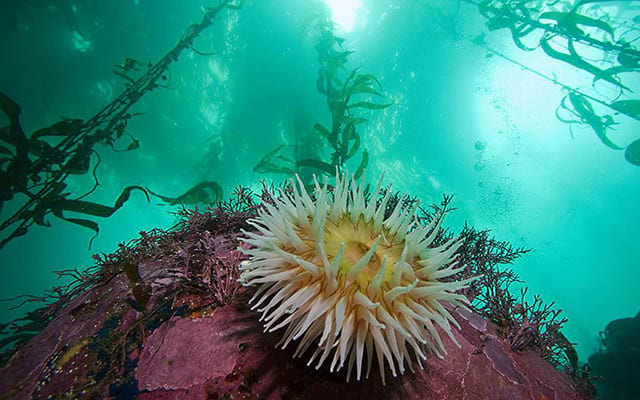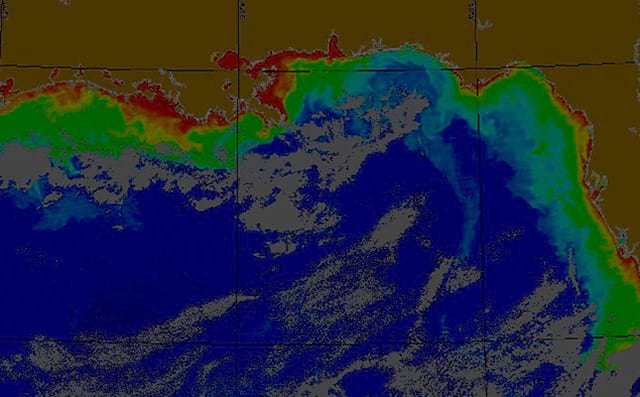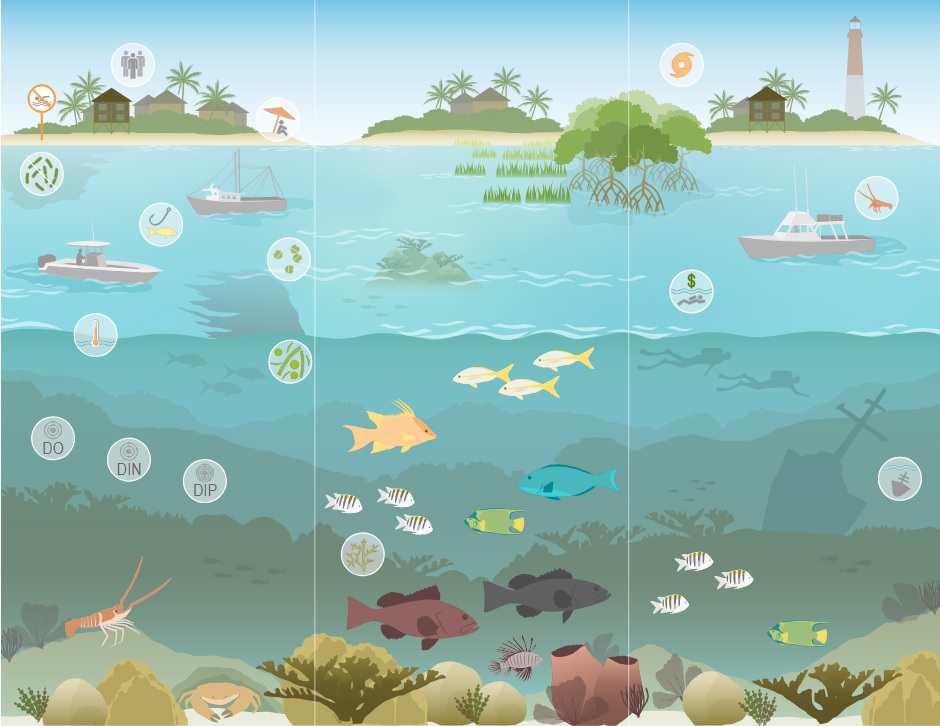
Background
The IOOS Marine Life Program goal is to implement a long-term, sustained marine life observation and data sharing capability that builds on and expands the infrastructure, momentum and successes of existing IOOS biological observing programs, in particular the Marine Biodiversity Observation Network (MBON), Animal Telemetry Network (ATN), and efforts of IOOS partners and Regional Associations. The program will leverage well-developed national and regional activities, stakeholder engagement and priority-setting processes, community structures, technology development, interagency coordination, and nearly a decade of National Oceanographic Partnership Program (NOPP) interagency investment towards developing this capability.
Focus Areas
Animal Telemetry Network
Gathering information on the behavior and movement of marine animals is an essential part of the responsibilities of our national agencies charged with protecting endangered and threatened marine species as well as providing ecosystem-based management of commercially harvested marine resources. The multi-agency U.S. Animal Telemetry Network (ATN) has been established to provide unity, stability and continuity to the national infrastructure that facilitates the collection, management and availability of this marine animal telemetry data.
Learn moreMarine Biodiversity Observation Network
The US Marine Biodiversity Observation Network (US MBON) is an interagency initiative that seeks to coordinate across sectors and government to characterize biodiversity and understand drivers of change. US MBON represents a broad, collaborative effort to address the need for systematic collection and sharing of marine life information, ensure that information is available for decision-making and management from local to national levels, and document marine biodiversity status and trends in the face of human- and climate-induced change using a range of technologies and approaches. Through the National Oceanographic Partnership Program, NOAA, NASA, Office of Naval Research, and BOEM have invested in US MBON since 2014, most recently announcing new five year projects in 2022.
Learn moreHarmful Algal Blooms
Harmful algal blooms (HABs) occur in marine and freshwater environments across the nation. Blooms can be noxious, discoloring water, and disrupting ecosystems by shading seagrasses or corals and causing oxygen depletion in bottom waters. The most severe impacts are caused by HABs that produce toxins, resulting in illness and even death. HABs are estimated to result in annual economic losses totaling at least 100 million dollars. In recent years, the frequency and duration of HABs, along with the number of species responsible, have all increased. In addition, the geographic range of some HAB species is expanding. Observations and measurements of HAB species and toxins are critical to support early warning and forecasting. IOOS has Pilot Projects to observe HABs and IOOS’ Ocean Technology Transition projects are supporting efforts to address two water quality issues: Harmful Algal Blooms (HABs) and Hypoxia.
Learn moreSanctuary Watch
Easy access to information for tracking ecosystem conditions, human connections and management impacts is critical to timely, effective and community-based resource management. The Sanctuary Watch platform provides web-enabled, interactive tools to track and better understand the changing nature of sanctuary ecosystems. Sanctuary Watch data products and information are developed in collaboration with our data partners along with science communicators and educators.
Learn moreApplications/Use Cases
HAB Bulletin
Pacific Northwest HAB Bulletin guides shellfish managers to open harvest early
Habitat Compression Indices
Habitat compression indices for monitoring ocean conditions and ecosystem impacts within coastal upwelling systems
Sharks as Oceanographers
New advances in satellite tag technology allow marine animals to transmit ocean temperature-depth profiles in addition to tracking their movements
SoundCoop
Breakthrough for Passive Acoustic Monitoring’s Big Data
Data and Product Guidelines
IOOS Documentation Portal is a collection of IOOS Data Management and Communication (DMAC) guidelines, specifications, and software tools that allow IOOS data provider organizations to publish their data in an interoperable fashion adhering to DMAC principles. This page describes the various components and where to find more information on each.
 Official websites use .gov
Official websites use .gov Secure .gov websites use HTTPS
Secure .gov websites use HTTPS




.jpg)